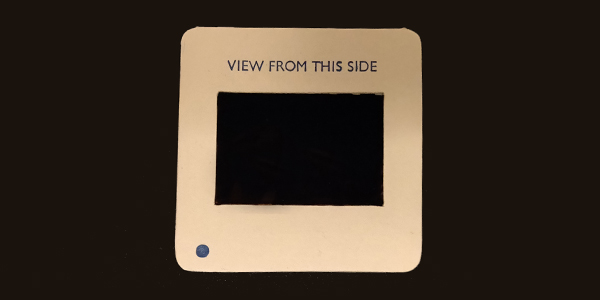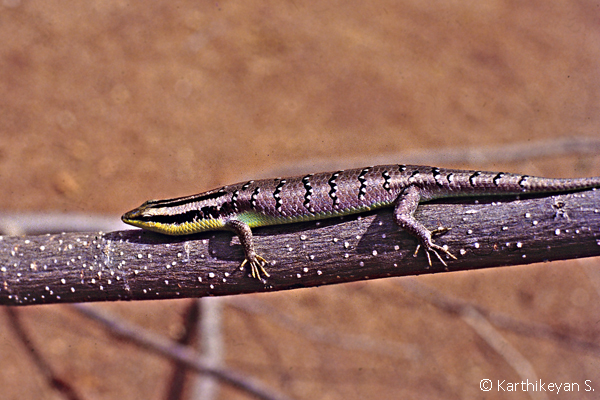When an opportunity to volunteer for WWF-India in a Nature Camp at Mundanthurai came up, I was thrilled. Who would want to miss a chance to go into the woods after all. Even more so, as it came at an opportune time – I had been itching to try my new camera. I had managed to lay hands on my camera just a couple of months prior and I was excited when this call for volunteers came up.
It was the summer of 1990. I reached Mundanthurai after an overnight journey. Needless to say, I had my bag on my lap through the journey – it contained my camera after all. I also had with me two rolls (72 frames to expose!!) of positive (slide) film.

Slide in a cardboard mount.
We were to be stationed in a facility that was run by the Tamil Nadu Forest Department very close to the banks of the Servalar River for the next few days. Also, I had a free day to familiarise myself with the place before the participants for the camp came in. Naturally, having done my homework, I headed straight to the gallery forests along the banks of the river accompanied by a local guide. Perhaps, I would have taken a plunge in the cool waters, had I known swimming.
Over the rest of stay, I would go looking for things in this patch of forest whenever time permitted. On one of the days, I realised that not knowing how to swim proved to be a boon. I was instead, walking along one of the trails when my guide happened to spot a slow moving skink among the branches. I quickly pulled out my camera and took a couple of frames. There exist close to 60 species of skinks in the country and the one I had just photographed was none other than the uncommon Arboreal Skink Dasia hailana. Seeing this skink was truly a treat! Black lines on the head and neck, followed by rows of white dots edged with black on a bronze back accompanied by yellow and green colouration on the undersides added to the beauty of this creature.

Barred Tree Skink or Johnsingh’s Tree Skink Dasia johnsinghi
I was aware about the occurrence of this species from these forests from the publications of Dr. Justus Joshua and Dr. AJT Johnsingh, both of whom had recorded this beautiful species of skink from the same general area. In fact, Justus Joshua considered this population to be a range extension of the species from Sri Lanka.
As science advanced and more research was done, interestingly, this species was given a new name Barred Tree Skink Dasia johnsinghi. And, as is evident, the team of scientists who described this species have named it after one of the doyens of natural history and a great teacher – Dr. AJT Johnsingh. It is also alternately referred to as Johnsingh’s Tree Skink.
You may wonder as to why I had not written about this incidence much earlier in my blog. In fact, to tell you the truth, I was reminded of this species and my photographs, only when someone asked a picture of this rare skink for a publication.